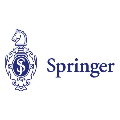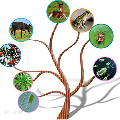Regulatory radio spectrum management is evolving from traditional static frequency allocation and assignment schemes towards dynamic spectrum management and access schemes. This evolution is necessitated by a number of factors including underutilization of licensed spectrum bands, changing market and technological developments and increased demand for spectrum for emerging applications in multimedia communications, internet-of-things and fifth generation (5G) wireless networks. In simple terms dynamic spectrum management involves allowing unlicensed users known as secondary users (SUs) to access the licensed spectrum of a licensed user also known as primary user (PU). This is primarily achieved using spectrum sharing schemes that leverage spectrum database and cognitive radio techniques. However, the use of spectrum database and cognitive radio techniques faces reliability, security and privacy concerns for spectrum sharing. There is also a need to support other requirements of dynamic spectrum management such as secondary spectrum trading market and dynamic spectrum access coordination. In this work, we review the use of blockchains for enabling spectrum sharing and other aspects of dynamic spectrum management. The review covers the use of blockchain to record spectrum management information such as spectrum sensing results and spectrum auction transactions in a secure manner. The article also covers the use of smart contracts to support complex service-levelagreements (SLAs) between network operators which is key to supporting a self-organized secondary spectrum sharing market and enforcement of regulatory policies. A taxonomy of the intersection between blockchain and various concepts of dynamic spectrum management is also provided
翻译:无线电频谱管理从传统的静态频率分配和分配计划演变为动态频谱管理和接入计划,这一演变是由于若干因素造成的,包括未充分利用特许频谱波段、不断变化的市场和技术发展以及对于多媒体通信、互联网和第五代(5G)无线网络中新出现的应用对频谱需求的增加。简单而言,动态频谱管理包括允许被称为二级用户的无证用户进入特许用户(也称为主要用户(PU))的频谱管理范围。这主要是利用频谱共享计划实现的,利用频谱数据库和认知式无线电技术。然而,频谱数据库和认知式无线电技术在频谱共享方面面临着可靠性、安全和隐私问题。还需要支持动态频谱管理的其他要求,如二级频谱交易市场和第五代(5G)无线网络。在这项工作中,我们审查使用封闭链促进频谱共享和动态频谱管理其他方面的使用情况。审查包括使用链路段管理信息,例如频谱遥感结果和频谱拍卖交易安全方式。文章还涉及使用智能合同支持复杂地支持动态系统供应链的复杂服务级管理概念,而核心监管系统系统管理网络是各种监管系统的系统。





